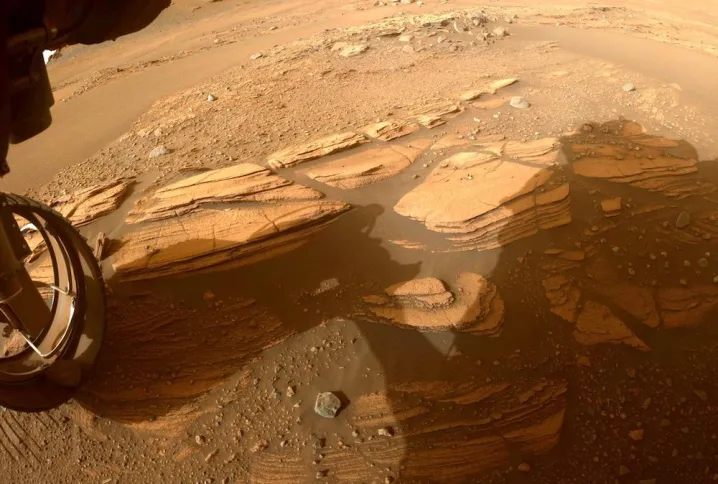NASA has shared an image captured on Mars showing a spot where scientists believe they could find the first evidence of ancient microbial life away from Earth.
The photo (below) was captured by NASA’s Perseverance rover and shows what the mission team at the Jet Propulsion Laboratory in Southern California call “Enchanted Lake.”

Now, the eagle-eyed among you will have noticed that for a lake, it looks pretty darn dry. And that’s because all of Mars’ water disappeared from its surface billions of years ago.
But when water did exist there, there’s a fair chance it could have harbored life. And it’s evidence of that life that Perseverance is seeking to find during its ongoing mission.
Enchanted Lake is located in a delta at the western edge of Jezero Crater, which scientists believe was filled with water billions of years ago. The delta is an enormous fan-shaped area containing thin layers of sedimentary rock, precisely the kind of geological feature that may give scientists the breakthrough they’re after.
This is because the rock comprises mud, silt, and sand from a river that once flowed into the crater lake, so any organisms that existed at the time will have been captured within the layers, “frozen in time as fossilized lifeforms,” NASA said.
Commenting on Perseverance’s image of Enchanted Lake, Katie Stack Morgan, the deputy project scientist for NASA’s Perseverance rover, said: “It was love at first sight. This image provided our first up-close glimpse of sedimentary rocks — the ones I’ve been most eager to explore since Jezero was named the landing site for Perseverance nearly four years ago.”
Since the image was captured in April, Perseverance has traveled further up the delta and is currently in a field of sedimentary rocks the mission team has named “Hogwallow Flats.”
In the coming weeks, Perseverance will analyze some of the nearby rocks, and may even take a sample by drilling into it. After that, the team will decide whether to guide Perseverance back to Enchanted Lake for more samples or direct the rover elsewhere.
The gathered samples will be returned to Earth in a separate mission, enabling scientists to use cutting-edge tools to analyze the material to finally determine if life ever existed on Mars. Such a discovery would in itself be remarkable, but it could also help scientists to unlock some of the secrets of how life developed here on Earth.
Editors' Recommendations
- Relive Mars rover’s spectacular landing exactly 3 years ago
- NASA’s damaged Ingenuity helicopter spotted in Mars rover photo
- NASA’s Mars helicopter just flew a colossal distance
- NASA’s Mars helicopter is about to attempt a colossal flight
- NASA’s Mars helicopter still working fine after month-long break


